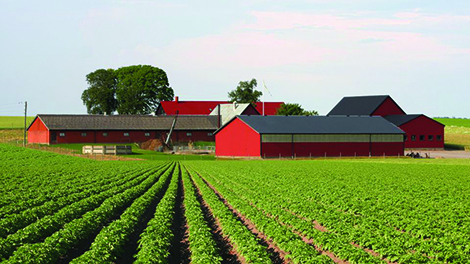What federal climate legislation means to farmers and the food system
By Lisa Held
Civil Eats
Last August, the U.S. Senate passed the country’s most significant climate bill to date. The Inflation Reduction Act (IRA) will incentivize unprecedented shifts toward renewable energy, electric vehicles, and curbing methane emissions from fossil fuel production.
For farmers and the broader food system, experts say the climate bill doesn’t go nearly as far but will still have far-reaching implications. Action to curb emissions from any sector will benefit farmers struggling to grow food as weather extremes and disasters increase, and the legislation directly earmarks about $40 billion for U.S. Department of Agriculture (USDA) conservation programs—many of which incentivize climate-friendly practices such as reducing tillage and the planting of cover crops—renewable energy infrastructure on farms and in rural communities, and climate-smart forestry.
“The influx of money is unquestionably a big deal for sustainable agriculture and climate resilience,” said Michael Lavender, interim policy director at the National Sustainable Agriculture Coalition (NSAC)..
In addition to NSAC, farm groups including the National Farmers Union, the National Young Farmers Coalition, and food advocacy organizations including the Union of Concern Scientists mobilized their members to push for the bill’s passage. The American Farm Bureau Federation, which represents the agricultural industry and has historically fought against climate policy, largely stayed quiet on the bill. In a statement from AFBF President Zippy Duvall told Civil Eats the organization supports “voluntary, market-driven programs that help the environment” but had “serious concerns” about tax increases in the bill. The IRA includes a 15 percent minimum tax rate that will apply to the 200 largest corporations in the country, which often exploit loopholes to pay a lower tax rate than working families.
The historic investment in climate action comes on the heels of the latest reports from the United Nations’ Intergovernmental Panel on Climate Change, which declared a “code red for humanity,” and emphasized that countries around the world were not moving fast enough to address the problem. Experts estimate the IRA could cut emissions about 40 percent below 2005 levels by 2030, which still falls short of the administration’s 50 percent goal but puts it within reach if other measures are taken.
The bill includes $500 million for increased biofuel infrastructure and market expansion, despite the fact that many climate experts see ethanol as a false climate solution that comes with other environmental consequences. And the penalties it imposes on the oil and gas industry on methane emissions don’t apply to large animal farms, which produce just as much of the powerful planet-warming gas.
Critics have also said it fails to focus on issues that could truly affect emissions from agriculture and the food system, such as reducing food waste, helping shift diets, and preventing big agricultural emissions, especially methane from cattle and nitrous oxide from fertilizers and manure. Some climate experts have concluded that food systems solutions like those will be critical to meeting global targets.
But groups like NSAC are optimistic about the $20 billion boost to conservation programs like the Environmental Quality Incentives Program and the Conservation Stewardship Program, since the USDA hasn’t had anywhere near the funds to accept all the farmers that apply.

